
9 April 2007
Author/Illustrator: Dr. Seuss
Many point to Bruno Bettelheim's award winning book, The Uses of Enchantment: The Meaning and Importance of Fairy Tales, as the moment that Freudian psychoanalysis officially came in contact with the realm of children's literature. While it is true that Bettleheim may have been one of the first academics to tackle the subject, it was the seminal work of Theodore Geisel (Dr. Seuss) that introduced children to Freud for the first time. Case in point: his playful exploration of the Oedipal complex: Hop on Pop.
Hop on Pop was published in 1963, a full 13 years before Bettelheim's Enchantment, and decades before Freud was widely dismissed by the psychological community as a coked-up sex fiend. Pop can be read as a thinly veiled introduction to the disturbing psychosexual theory that the father is the enemy who is preventing us from realizing some deeply ingrained sexual need for our mothers. Gross! Luckily, Seuss didn't get too caught up in the raging Sigmundsteria of the times, otherwise he may have been tempted to go all-out Oedipal and written his book as Hop on Pop then Marry Mommy, which probably would have tarnished his otherwise untouchable legacy.
Upon closer inspection, Freud and other psychological influences can be found sprinkled throughout Seuss's work. The Cat in the Hat is nothing more than a hyperkinetic romp through the subconscious with the Id, Ego, and Superego. The entire plot of Green Eggs and Ham is driven by Freud's theories of the repression and sublimation of base impulses. (What else could "Sam I Am" be, other than an anal-retentive individual's guilt-ridden projection of the repressed self and its latent desires?) And Horton Hears a Who? Horton hears a psychiatrist diagnosing him with schizophrenia, that's who he hears. In fact, if you read too closely, Seussville runs the risk of becoming an inescapable labyrinth of Freudian slips and slides... so maybe we're better off reading with eyes wide shut.
Viewing: Blog Posts Tagged with: weekly challenge, Most Recent at Top [Help]
Results 1 - 25 of 130
Blog: Bottom Shelf Books (Login to Add to MyJacketFlap)
JacketFlap tags: BSB Flashbacks, Add a tag
Blog: Bottom Shelf Books (Login to Add to MyJacketFlap)
JacketFlap tags: BSB Flashbacks, Add a tag
7 January 2008
The Construction of Meaning and the Self De(con)struction of Identity: A Hippo-Critical Analysis of Jeff Newman's Hippo! No, Rhino!
Rosco P. Hargrove (Class of 2010)
English 421: Re-Introduction to Literary Criticism
Professor F. R. Zismer
Final Paper
Submitted on: December 22, 2007
Plot Summary
A mischievous zookeeper decides to have some fun and puts a sign that reads "Hippo" in front of the Rhino pen. This seemingly harmless bit of mischief wreaks havoc on the rhino's psyche as passersby continually refer to the rhino as "hippo". The rhino desperately tries to correct them, but to no avail. It isn't until a little boy comes along that things change. The child sees what's going on and changes the sign back to rhino. The book ends with the zookeeper continuing his mischievous ways by putting up a new sign that reads, "Porcupin-o".
Part I: Hippo! No, Rhino! Structuralism! No, Poststructuralism!
Newman's sparse use of language is deceptive. While he uses few words in his narrative, he manages to reveal deeper linguistic issues by drawing together some of the fundamental issues and conflicts in literary criticism.
As a starting point, the basic conflict in Hippo! No, Rhino! is clearly a re-creation of the tension between the structuralist and post-structuralist schools of thought. Newman's Hippo! No, Rhino! situation is an intriguing thought exercise which forces us to reconsider a fundamental question: Where does meaning come from?
Is it from the zookeeper (filling the archetypal role of trickster-god) who creates meaning by labeling the rhino as "hippo"? Or is his semantic subversion just a silly prank?
Is it the people reading the sign who give birth to meaning by creating the link between the sign ("hippo") to the signified (the rhino)? Or are they merely dimwitted automatons who will believe anything they read?
Is there even any meaning to begin with? Who are we (or the rhino) to say that "rhino" is the correct label? Isn't the polyphonic spree of letters and sounds that make up r-h-i-n-o ultimately as arbitrary as h-i-p-p-o?
Part II: Pedagogy of the Zoopressed
If we continue to peel away layers of this onion, we eventually find ourselves alone with the tear-jerkingly tragic figure of the "rhino".
(Note: Though it is awkward, I will refer to the rhino using the pronoun "it" because Newman's text does not indicate whether the rhino is male or female.)
(Full disclosure: Upon first reading, I subconsciously assumed that the rhino was a male, which tipped my hand as an unwitting co-conspirator in the phallocentricity embedded in our male-dominated society. I would like to assure you, professor, that based on last semester's readings on feminist theory and gynocritic analysis, I am sufficiently ashamed.)
Why is the rhino a tragic figure? Not only because it is helplessly tormented by the powerful zookeeper... that is but a minor offense. The true tragedy reveals itself with further examination of the sociolinguistic context of the rhino's self-identification.
The word "rhino," being of English (Anglo-Saxon) origin is obviously not the rhino's native tongue. Yet the rhino has come to identify itself as a "rhino," as evidenced by the psychological distress caused by the hippo sign. This self-identification through the language of his oppressor (and yes, he is oppressed... he is, after all, held captive and put on display) is one of major symptoms of oppression that is revealed by postcolonial theory.
The fact that the rhino clings so passionately and desperately to the name bestowed upon him by his captors, demonstrates the powerful role that language plays in perpetuating the inequalities of established social hierarchy. Not only does he accept his given name, he challenges anyone who dare disrupt the sanctity of his moniker. How can the rhino truly free itself from oppression if it lives, breathes, and thinks in the language of its oppressor?
This also sheds new light on the character of the child. As I mentioned in the plot summary, toward the end of the book a young child comes to the rescue, changing the hippo sign back to rhino.
Upon first reading, the child appears as a saviour figure who sympathetically changes the sign to ease the "rhino's" mind. The child's innocence allows him to see beyond the ridiculous sign and recognize the psychological harm being done to the rhino. And yet...
...and yet, perhaps it is not that simple. By reverting the sign (the linguistic tool of oppression), isn't the child merely reinforcing the domination of the status quo and strengthening the establishment's vice-like grip on society? The child may have acted to ease the rhino's mind but (despite the child's benelovent intentions), in actuality he played an active role in relegating the beast to an eternity of tranquil captivity. He did not rescue the rhino, he merely made his cage stronger.
Part III: Freedom Isn't Free or All Signs Point to "No"
Newman's stimulating text leaves the reader (at least this reader) with a final burning question... Who holds the key to the rhino's freedom?
The optimist's answer would be that the key to freedom lies with the rhino itself. Unfortunately, to quote Karl Marx, "Religion is the opium of the masses and optimism is the ecstasy tablet of the self-delusional." So no, the rhino does not hold the key to his own freedom.
The real answer is much simpler and much more sobering. The key to freedom lies with: the zookeeper. (Seriously, it's on the big key ring that's clipped to his belt buckle.)
This does not bode well for the rhino. At the end of the book, the zookeeper puts up a new sign next to the rhino that reads, "Porcupin-o". In doing so, this sadistic trickster god is assuring us that the rhino's nightmare is not over... and that no amount of lit crit is going to save him from an eternity in this semiotic purgatory. The helpless rhino (like the rest of us) is forever caught in that desolate place between meaning and just plain mean.
Blog: Bottom Shelf Books (Login to Add to MyJacketFlap)
JacketFlap tags: BSB Flashbacks, Add a tag

29 March 2007
Author: Rose A. Lewis
Illustrator: Jane Dyer
This lovely story about international adoption (along with 50 Cent's immortal lyric, "I love you like a fat kid loves cake") made cake a universally accepted unit of measurement for love. (e.g. "With her latest adoption, Angelina Jolie has proven to have over a million crazy cakes worth of love to give." or "Madonna found herself in a crazy cake's worth of trouble with the international community when she circumvented the law in an attempt to adopt a baby from Malawi.")
However, like roses, different cakes signify different kinds of love... so interpretation can get tricky. According to Lewis's book, "crazy cakes" are used to measure the amount of love between a mother and her adopted baby--but what about other cakes? As a public service, I've included a rudimentary glossary below to help you decipher the messages hidden in those convoluted and calorie-laden love notes. Good luck!
Birthday Cake: Even though you're getting older, I'm still here. I guess that means I love you.
Birthday Cake (with a hidden file inside): I love you, but not enough to wait for parole, so you can either escape from prison or begin cultivating that special friendship with your cellmate.
Birthday Cake (with a hidden stripper inside): Yes, there is a God.
Bundt Cake: I love you, but I feel like something is missing... for starters: a tolerable personality, a basic understanding of good hygiene, and any legitimate job prospects that don't involve some godawful incarnation of Dungeons and Dragons. Plus, you're just not attractive enough for me. So, I guess I was wrong... I don't love you. Give me back my cake.
Cupcake: I don't love you quite enough to bake you a full-sized cake.
Cupcake (with pink frosting and sprinkles): I luv u, and if u luv me back, tell Ryan at lunch so he can tell Jessica, who will tell me, and then I'll meet u by my locker after 5th period!!! TTYL!!!! ;)
Ice Cream Cake: I love you like a friend... kind of like how I love my DVD collection.
Rice Cake: My love may be bland and unsatisfying, but I guarantee that it will not harm you in any way, shape, or form.
Rice Cake (caramel flavored): I can change, I swear! I don't have to be boring! I can take salsa lessons! I'll start gelling my hair! I can--oh, who am I kidding? I give up. I'm going home to play x-box.
Vegan Sugarless Carrot Cake: I am morally opposed to enjoying life. Yes, that includes love. Don't touch me.
Wedding Cake: I love you with all of my heart. Let's spend the rest of our lives together and eventually stop having sex.
Blog: Bottom Shelf Books (Login to Add to MyJacketFlap)
JacketFlap tags: BSB Flashbacks, Add a tag
Yesterday, I reached a tipping point in my frustration with the rapid decay of our political discourse and by the fact that we appear to have wandered into a long-lost Joseph Heller or George Orwell novel. Seeing that things were turning ugly (and ridiculous) quickly, and that Obama seemed to be painted into a corner, I used my lunchbreak to take a stab at figuring out how Obama could possibly respond. This is what I came up with.
Though maybe I should have saved my lunchtime and read what Paul Krugman wrote which made the same points. But he makes those points with facial hair, which gives him a decided edge... that and the fact that he writes for the New York Times.
Okay then, now that my brief foray as imaginary speechwriter is over, it's back to picture books for me!
Flashback to: 24 February 2008
Author/Illustrator: Tom Tierney
Anyone following the election knows that every Republican nominee had been desperately trying stake claim as the heir apparent to Ronald Reagan. Mitt Romney had the looks, but not the soul. Fred Thompson had the acting chops, but not the stamina. Mike Huckabee had the charm, but not the stature. (I'm not even going to bother with Giuliani and Ron Paul... the rest of the country isn't, why should I?)
Now, for all intents and purposes, there is one GOP candidate left standing: John McCain. And now, thanks to Tierney's book, McCain can actually put on Reagan's clothes and try to convince America that he is Reagan's true successor.
Though I don't see it happening. Reagan's greatest asset was his gift as an orator--he was such a great speaker that he fooled the country into thinking that a silly idea like Trickle-down economics made sense. As for McCain, his speeches sound about as convincing as a 4th grader reading the book report that his mom wrote for him.
But still, let's take a look at how McCain might conjure the spirit of Reagan to convince America that he is as paper-thin as the Gipper himself. Straight Shootin' John McCain
Straight Shootin' John McCain
I am the candidate that is not afraid to tell it like it is. I shoot straight from the hip. I drive the Straight Talk Express. And the straight truth is that despite my better judgment, I have no choice but to pander to my party's base in order to secure the Republican nomination.
If that means supporting the Bush tax cuts, so be it. If it means fudging my stance on torture, why not? If it means denouncing evolution, bring it on! In fact, if I did see a dinosaur, I would shoot it dead and serve it at my next fundraiser to prove just how straight I can shoot... at whatever it is the base wants me to take aim at. Damage Control McCain
Damage Control McCain
What, this picture? I've told you already that Ms. Iseman and I are merely acquaintances. I am saddened and frustrated by the obvious liberal media bias being perpetuated by the New York Times.
I also find it comical--if a bit flattering--that anyone would believe that a man of my age would still have any sexual impulses left. Because my friends, let me assure you... when it comes to little John McCain, he's been little John McCan't for some time now. Bedtime for Bonzo McCain
Bedtime for Bonzo McCain
My friends, we live in dangerous times. We must take care not to let our guard down lest we allow the terrorists to win. Just like Ronald Reagan held firm when caring for an unruly chimpanzee named Bonzo, I, as your Commander In Chief vow to accept the challenge and stare the great ape of terrorism in the eye. And trust me my friends, I won't be the first to blink.
The Democrats don't have the backbone to put Bonzo to bed. But I assure you, the American people, that when I am President, I will not rest until we get the monkey of terror off our backs and we put the issue to bed once and for all.
When I consider the prospect of another neglectful Democratically-led country, I think back to something the great Ronald Reagan once told me. He told me, "Johnny, whether you're babysitting a chimp or battling terrorists, you can be sure of one thing: If you turn your back for even one second, you are going to get feces thrown at you." So America, the choice is yours: do you want to get feces thrown at you? I didn't think so.
Blog: Bottom Shelf Books (Login to Add to MyJacketFlap)
JacketFlap tags: BSB Flashbacks, Add a tag

10 October 2007
Author/Illustrator: Don Freeman
This is the classic tale of a department store bear who goes out in search of his missing button. In the process, he finds more than a button... he finds friendship and discovers the power of love.
Re-reading this heartwarming book tickles the little nostalgia bone in even the most hardened souls out there. Not only because of Corduroy's triumph, but because the story hearkens back to a simpler time, a Golden Age for Toys... long before things started to go horribly and profoundly wrong.
It's hard to pinpoint exactly when the downward spiral began, but there is no denying that the Age of Innocence is now no more than a distant memory.
Key Moments in the Descending Decency of Toys
Chucky: Not only did this bloodthirsty doll strike fear in children everywhere with its campy gore, but it somehow managed to spawn a lengthy Child's Play series, extending Chucky's reign of terror into the present day.
Left: Seed of Chucky. The low point of pop culture? The low point of all culture? The low point, period?
Tickle Me Elmo: Tyco somehow convinces the world that toys possessed by the devil would be perfect for Christmas.
Left: Comes with free exorcism kit, complete with vial of (faux) holy water. The power of Big Bird compels you!
Toy-tal Recall: Mattel recalls millions of toys because a manufacturer in China used dangerous lead paint... proving that dolls don't have to come alive and wield sharp knives to be deadly.
Left: Barbie. Apparently, her looks can kill.
Threat Level Tonka: The Transportation Security Administration announces that they will start paying extra attention to all radio-controlled toys in airports because they can be used to detonate bombs.
Left: Weapons of Fast Destruction: Batteries Not Included
And then, just when you thought things couldn't get any worse, last week came this latest sordid bit of news:
MR. POTATO HEAD IN ECSTASY BUST: "Customs officers discovered nearly 10.5 ounces of ecstasy tablets hidden inside a Mr. Potato Head toy sent to Australia from Ireland, the agency said Thursday."
Oh dear.
Yes this is tragic... but deep down, didn't we all see this coming? After his surprising success in Toy Story and Toy Story 2, it was only a matter of time before Potato Head was swept up by the wave of his newfound celebrity.
First came the funky hipster glasses, then the pretentious moustache, and then smuggling a body cavity filled with MDMA across international borders. According to an unconfirmed source, police searched Potato Head's luggage and found a box of glowsticks, 5 cartons of lollipops, and 26 extra smile accessories. Though this is the first time he was caught by the police, Potato Head has been seen living it up with Hollywood's party elite for months now. Next month's US Weekly will have the exclusive exposé, Mr. Potato Head: Lovable Spud or "Raving" Lunatic?
Left: Paparazzi capture a shot of Mr. Potato Head at a rave in downtown L.A.
So as you can see, between the War on Terror and the Bowels of Hollywood, toys have long abandoned the idyllic shelves of the Rockwell-era department stores. Since then, they have traveled down a dark and twisted path to a point where they can no longer be trusted, let alone loved.
So what now? Is there any hope?
Well, let me tell you a story. Long ago, a brave little bear named Corduroy set off into the unknown in search of his lost button. Now it's our turn to follow in his footsteps. Are we brave enough to march into the void to search for our lost innocence, not knowing what we might find?
Heck NO! No, we are NOT brave enough for that! Retreat! RETREAT!!!
Blog: Monday Artday (Login to Add to MyJacketFlap)
JacketFlap tags: change, weekly challenge, Cardona, Add a tag
Blog: Monday Artday (Login to Add to MyJacketFlap)
JacketFlap tags: change, weekly challenge, Cardona, Add a tag
Blog: Monday Artday (Login to Add to MyJacketFlap)
JacketFlap tags: change, weekly challenge, Cardona, Add a tag
Blog: Monday Artday (Login to Add to MyJacketFlap)
JacketFlap tags: change, weekly challenge, Cardona, Add a tag
Blog: Monday Artday (Login to Add to MyJacketFlap)
JacketFlap tags: change, weekly challenge, Cardona, Add a tag
Blog: Monday Artday (Login to Add to MyJacketFlap)
JacketFlap tags: change, weekly challenge, Cardona, Add a tag
Blog: Monday Artday (Login to Add to MyJacketFlap)
JacketFlap tags: change, weekly challenge, Cardona, Add a tag
Only Change is Constant
Blog: Monday Artday (Login to Add to MyJacketFlap)
JacketFlap tags: change, josh pincus, weekly challenge, Add a tag
The Monday Artday challenge this week is "change".
This quote has been listed in some sources as an authentic Gypsy or Eastern European folk saying. Screenwriter Curt Siodmak admits that he simply made it up for 1941's The Wolf Man. However, the rhyme would be recited in every future Universal film appearance of the Wolf Man, and would also be quoted in Van Helsing (2004).
Blog: Bottom Shelf Books (Login to Add to MyJacketFlap)
JacketFlap tags: BSB Flashbacks, Add a tag
Following yesterday's election in Russia, it appears that there is a new top dog in town... though it looks like he will be on a tight leash controlled by the old top dog.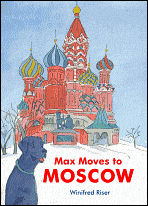
7 May 2007
Author/Illustrator: Winifred Riser
Max Moves to Moscow is a revealing story about America's influence on life in post-communist Russia. Max the black lab (democracy) moves from the U.S. to Russia. At first, he encounters an unwelcoming society that is buried under a thick blanket of snow from the harsh communist winter (and the literally cold war). However, due to his persistence and American can-do attitude, Max eventually makes friends with the dogs in the park and teaches them a new ball game (capitalism). This game proves to have a steep learning curve and the dogs keep losing the balls in the snow.
When the snow eventually melts, suddenly there are balls all over the place, ushering in a period of general chaos as the dogs struggle to deal with their newfound wealth. Yeltsin the Russian Bulldog eventually takes charge of the game and keeps the balls for himself and his friends... while the other dogs wait in long lines for toilet paper.
Eventually, Yeltsin eventually tires of playing and Putin the Russian Greyhound takes over. He immediately tightens the rules of the game by instituting a ruthlessly efficient authoritarian style of play. More dogs get to play, but they aren't even sure if it's the same game anymore... or if they still want to play. Problem is, no one dares to stop or even call timeout. When Putin says play, you play--because his bite is definitely worse than his bark. Case in point: the last dog that tried to get out of the game mysteriously died from uranium poisoning.
Blog: Monday Artday (Login to Add to MyJacketFlap)
JacketFlap tags: weekly challenge, underground, Kelly Schwark, Add a tag
...COLOR waiting to bud! With spring still weeks away, and my yard still covered in its snowy white blanket, I just started imagining all of the lovely colors still sleeping. Soon the snow will be gone (but not before giving a hefty dose tonight!) and we will be graced with all of those beautiful hues from underground!
With spring still weeks away, and my yard still covered in its snowy white blanket, I just started imagining all of the lovely colors still sleeping. Soon the snow will be gone (but not before giving a hefty dose tonight!) and we will be graced with all of those beautiful hues from underground!
By the way, thanks for letting me join all of you here. Please feel free to visit me at my blog & website! I'd appreciate any feedback as I am still new to the world of freelancing! Thanks.
Blog: Monday Artday (Login to Add to MyJacketFlap)
JacketFlap tags: josh pincus, weekly challenge, underground, Add a tag
The challenge this week at Monday Artday is "underground".
The door boy's wages would vary from sixty five to seventy five cents a day, and from this he provided his own lamp, cotton and oil or candle.
Blog: Monday Artday (Login to Add to MyJacketFlap)
JacketFlap tags: underground, Cardona, weekly challenge, Add a tag
In the tube, in London, they often warn you to "Mind the Gap." The Gap is usually there, when you're not minding him, but never seen.
Blog: Monday Artday (Login to Add to MyJacketFlap)
JacketFlap tags: weekly challenge, Cardona, underground, Add a tag
Blog: Monday Artday (Login to Add to MyJacketFlap)
JacketFlap tags: weekly challenge, Cardona, underground, Add a tag
Blog: Monday Artday (Login to Add to MyJacketFlap)
JacketFlap tags: underground, weekly challenge, Cardona, Add a tag
Blog: Monday Artday (Login to Add to MyJacketFlap)
JacketFlap tags: Cardona, underground, weekly challenge, Add a tag
Blog: Monday Artday (Login to Add to MyJacketFlap)
JacketFlap tags: weekly challenge, Cardona, Getting Ready, Add a tag
Blog: Monday Artday (Login to Add to MyJacketFlap)
JacketFlap tags: Getting Ready, baseball, josh pincus, weekly challenge, Add a tag
The challenge this week on Monday Artday is "getting ready".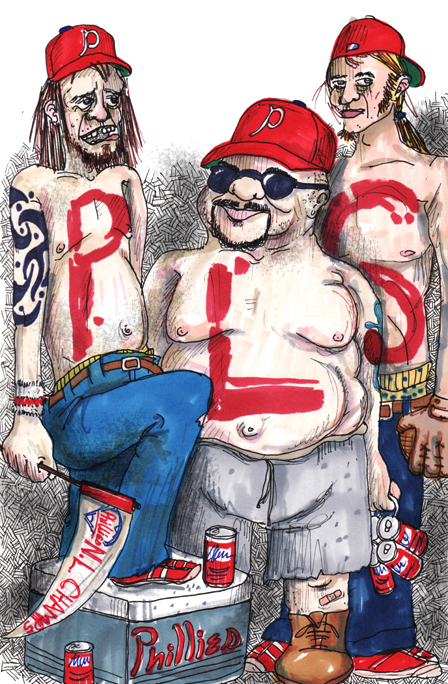
I have mentioned before. I love baseball. I love watching baseball. I love going to baseball games. There are somethings I don't like about baseball (namely Brett Myers), but overall, I love it.
I have been a Phillies season ticket holder since 1996. That means I suffered through some pretty lousy years. I saw some seasons end with the Phillies so close to a championship, only to blow it in the final week. Last season, of course, was different. The Phils won the National League East pennant on the last day of the season. I was there. I was there among a deafening crowd. A crowd that screamed for nine straight innings. A crowd made up, mostly, of people who had never been to a baseball game in their lives and were merely jumping on the "post-season bandwagon". Every one of them had loved the Phillies since...well....last week. As it played out, the Phillies post-season lasted three games and the temporary Phillies fans went back to follow the pathetic Philadelphia Eagles or American Idol.
I wouldn't consider myself a "Phillies Fan". It's just that I love baseball and I live in Philadelphia so I have no choice if I want to see a baseball game. Sure, there are several minor leagues in the area. But, if I want to see minor league-caliber baseball, I'll stick with the Phils.
I also worked as a soda vendor at Veterans Stadium when I was a kid. Veterans Stadium was home to the Phillies for 33 seasons. "The Vet" was, thankfully, imploded in March 2004. In April 2004, Citizens Bank Park opened. The new home of the Phillies is a beautiful, state-of-the-art facility that rivals many of the great parks in Major League Baseball. I've been to other parks in other cities. Citizens Bank Park is one of the best. Just hurry up and see it before the Phillies fans sh** it up.
The Philadelphia sports fan. An unusual creature, that fan. They are nationally known for their aggressive and angry behavior. Everyone knows, we are the fans that booed Santa Claus. I've seen a player make a spectacular, multi-run saving catch it the top of an inning and come up to bat in the same inning, pop-up and get chided by the same crowd like he just shot your dog.
And it's THESE guys.
These guys show up every year. (If not them, then someone like them.) On Opening Day, they love the Phillies. They'll scream, "The Phillies are going ALL THE WAY, BABY! ALL THE WAY TO THE F***IN' WORL' SERIES! DA METS F***IN' SUCK! THE PHILS ARE DA BEST!"
Until the first time Pat Burrell stands at the plate with his bat on his shoulder, thinking about his fifty million dollar contract, while three balls sail through his strike zone.
Then, the screams become, "THEY SUCK! DA PHILLIES SUCK! Hey, where's the beer guy?"
Blog: Bottom Shelf Books (Login to Add to MyJacketFlap)
JacketFlap tags: BSB Flashbacks, Wild Animal Kingdom, In the News, Miscellaneous, Wild Animal Kingdom, BSB Flashbacks, Add a tag
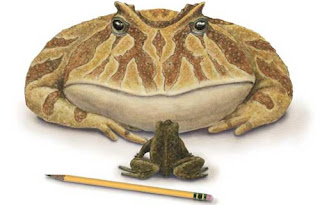
This flashback is in honor of the recently discovered Beezlebufo or Devil Toad, a prehistoric frog the size of a bowling ball which (according to Scientific American) may have eaten baby dinosaurs.
Note: Word on Capitol Hill is that Sen. Arlen Specter (R-PA) will be calling in the Beelzebufo to testify on possible use of human growth hormone... which is only slightly more ridiculous than Congress wasting taxpayer time and money on Roger Clemens and cheating in the NFL.
27 June 2007
Author/Illustrator: Steve Breen
This is the first picture book for Breen, the Pulitzer Prize winning cartoonist. With the story of Stick, a headstrong young frog who likes to do things on his own, Breen displays an impressive sense of humor and comic timing. One day, when Stick shoots his tongue out to catch a dragonfly, he gets carried away (literally) and embarks on a wild airborne adventure. Through a series of surprising developments, Stick excitedly explores the wild world... but will he ever make it back home?
Stick is merely the latest in a long and celebrated line of frog explorers. Indeed, nature's first true explorers were the frog's distant ancesters, those intrepid souls who first ventured out of the primordial ooze: the early amphibians. Frogs are direct descendants of those brave few who left the comforts of their homes to explore the unknown lands above the surface of the water. It's almost as if wanderlust is genetically encoded in frog DNA.
Young Stick also owes much to the most persistent explorer in frog history... an adventurer whose exploits are so well-known that he is known simply as: Frogger. Before Frogger, the frog population had to be content with life around the dank world of the pond. But Frogger yearned for more, he want to stretch the boundaries of his world and boldly go where no frog had gone before.
While people still wonder why the chicken crossed the road, no one questions the Frogger's motives. Frogger did not set out to conquer the world, he set out to conquer himself. Despite frequent setbacks and increasingly dangerous traffic, he refused to quit until he crossed every street that he came across. His indomitable spirit would not be denied... he would either succeed or get flattened in the process.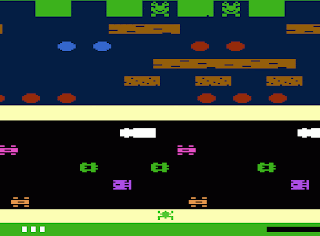
Left: An 18th Century Tapestry depicting The Wondrous Adventures of Frogger: Explorer Extraordinaire.
Other notable amphibious explorers: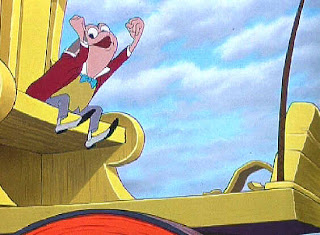
Mr. Toad: Not content with life at Toad Hall, our hero follows Dante's lead and explores the depths of Hell. This harrowing journey is well documented in his memoirs: Mr. Toad's Wild Ride. Kermit: Perhaps the most famous frog in history, Kermit was the ultimate explorer, blazing trails and opening doors at a prolific clip. He first burst onto the scene as the first frog in space ("One small hop for frogs, one giant leap for frogkind.").
Kermit: Perhaps the most famous frog in history, Kermit was the ultimate explorer, blazing trails and opening doors at a prolific clip. He first burst onto the scene as the first frog in space ("One small hop for frogs, one giant leap for frogkind.").
Returning to a hero's welcome, Kermit leveraged his newfound fame into a legendary career in film and television. After conquering the entertainment world and winning every award possible, Kermit begins to feel that familiar itch to touch the void of the unknown... it was not in his nature to be content. So he set out to explore what he believed to be the frog's final frontier: Politics.
Stealing a page from the GOP playbook (which turned the celebrity of Reagan, Schwarzenegger, and possibly Fred Thompson into political gold), the Green Party convinces Kermit to make a run for the presidency. Kermit immediately accepts the challenge. In the first in a series of shrewd moves, Kermit selects his longtime advisor Fozzy Bear to be his running mate (Fozzy's down-to-earth charm and folksy humor polls extremely well down South).
Despite a spirited campaign, Kermit's bid for the highest office in the land eventually falls short (though, being a third party candidate in America, they never really stood much of a chance anyways). While he may have lost the election, Kermit once again wins our hearts when he ends his concession speech with a tearful rendition of "It's Not Easy Being Green."
Who knows, perhaps young Stick will go down in history as the next great frog explorer. But if so, it should be noted that he did not do it alone... he was standing on the shoulders of giants.
Blog: Bottom Shelf Books (Login to Add to MyJacketFlap)
JacketFlap tags: BSB Flashbacks, BSB Flashbacks, Add a tag

14 February 2007
Author: Norton Juster
In honour of Valentine's Day, here is a timeless love story from the man who brought you The Phantom Tollbooth. This is the story of a straight line who is in love with a dot. The dot, however, is infactuated with a freeflowing and "too cool for school" squiggle. The dejected line goes off and conquers his insecurities by improving himself through the magic of geometry. He then puts on an impressive display that puts the squiggle to shame and wins the heart of the dot.
Rumor has it that Juster wrote this book just before going to his 10 year high school reunion. True or not, Juster's book embodies the dream of every nerd in history: to return to the scene of his shame (high school) as a successful and worldly man that suddenly turns the tables on all those jocks and stoners by winning the girl that had so painfully dismissed him in the past. If this were an eighties movie, the cast would be:
Dot: Molly Ringwald
Line: Anthony Michael Hall (though my younger sister suggested Jon Cusack, which is probably a better choice)
Squiggle: Some unkempt combination of Christian Slater and Judd Nelson
Directed by: Robert Zemekis (only because John Hughes would be too obvious)
View Next 25 Posts




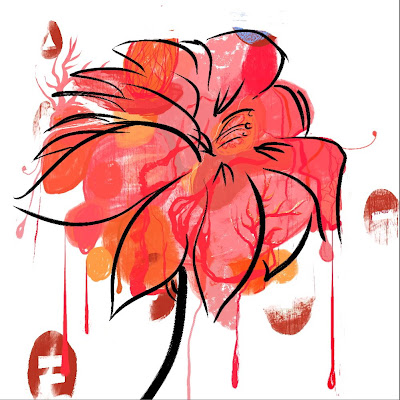
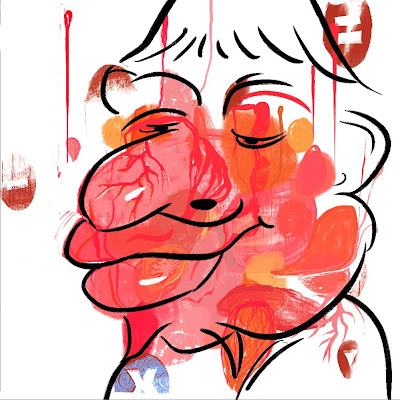
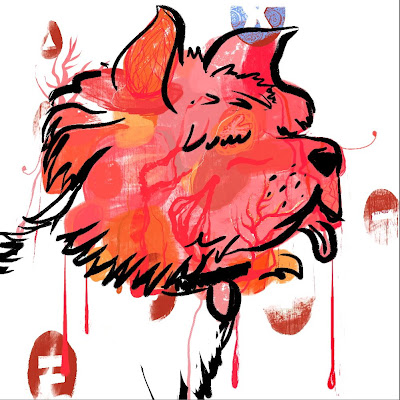
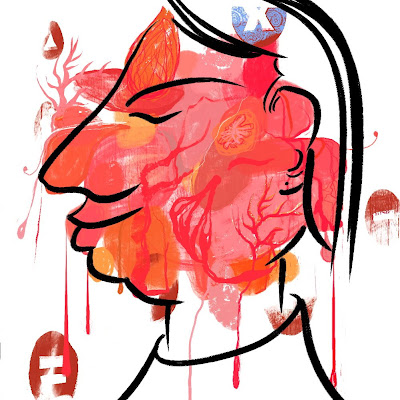
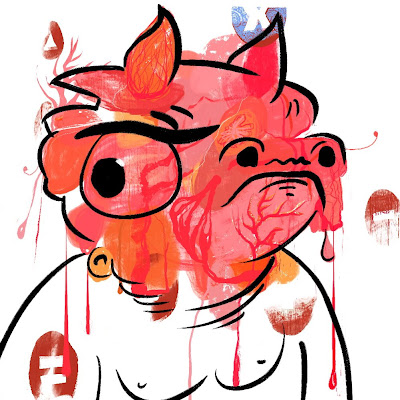


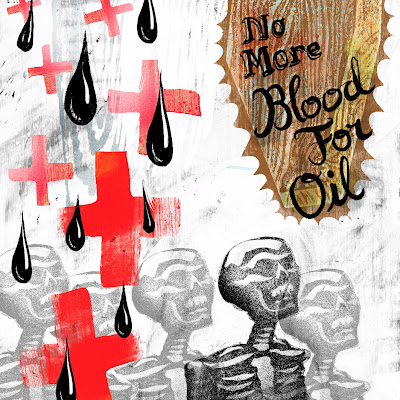
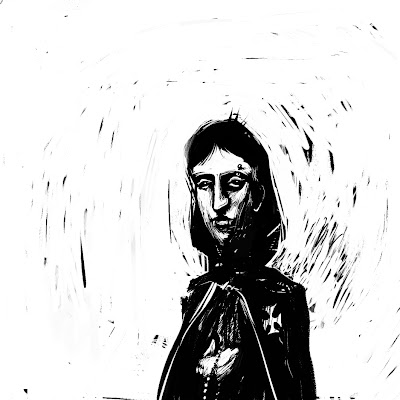


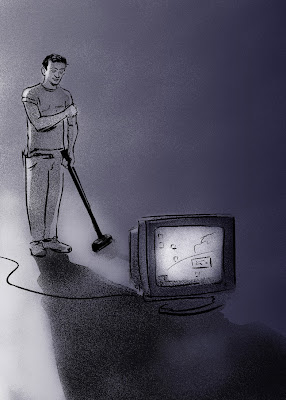
As an antidote to Wedding Cake, here's the Death By Chocolate Cupcake which belies its title to proclaim, "Romance is still alive!" We love these. Yes, there's a good reason to look forward to Valentine's Day in Seattle.
I {heart} your blog like ice-cream cake.
http://www.vebtoday.com
telugu Cinema,Andhra Pradeshclassifieds,yellowpages,TeluguAstrology,Telugunews,Clickmasala,Beauty Tips, Baby Names, Interview Tips,Ladies Special,Real Estate, Matrimonials,Latest News,Telugu Movies,Andhra People, Politics, Assembly, Andhra Pradesh, Real Estate, Andhra News, Telugu News,Gossips, India News, Headlines,ecards,prpparty, chiranjeevi,megastar,telugu people
How about Catnip and Nut Cake, which means, yes, I know that you're a crazy cat lady, but I'll share my life with you and your kitties anyway.
Thanks! I'll take one Death By Chocolate Cupcake and I'll take two Catnip and Nut Cakes and store them in the freezer in case of emergency.